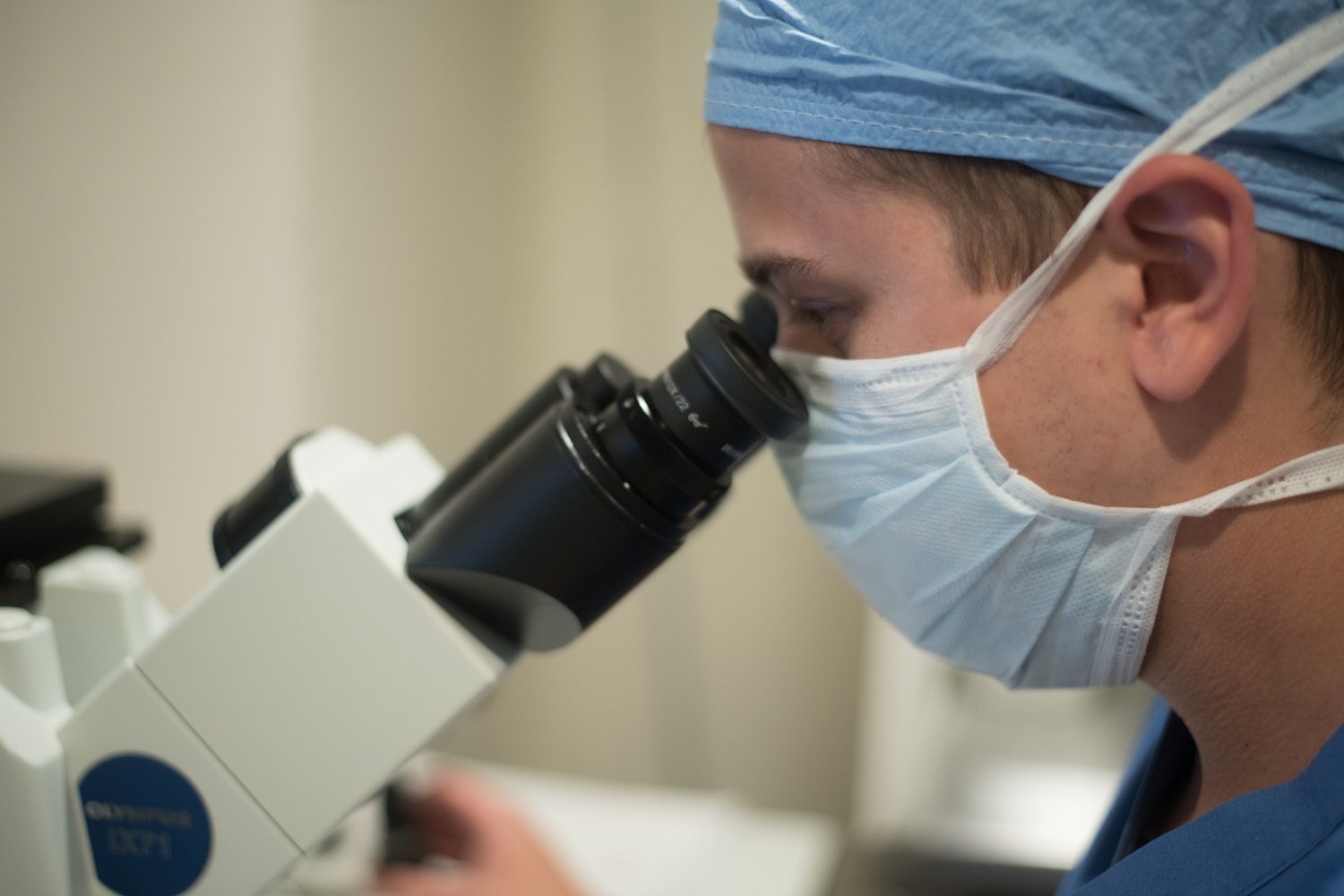40 Years of IVF from My Perspective

I performed my first egg retrieval in 1984 on a woman who had her fallopian tubes removed for a medical condition a few years prior. Louise Brown, the first baby conceived by in vitro fertilization (IVF), had just turned 6. In the years following her birth, IVF was featured in every major newspaper and magazine, even Time and Newsweek adorned their covers with photos of Louise. All of the media attention incited debates about the ethics of these new reproductive advances.
Early Challenges
There were several problems with the technology available to us in the 1980’s. It was difficult to get a clear image of the ovary and uterus with the early-stage ultrasounds, and we were unable to achieve fertilization unless the sperm was considered “normal.” Transvaginal ultrasound prototypes were developed in 1985, one year after my first IVF procedure. Prior to this, we relied on a woman with a full bladder and sonogram imaging through the abdomen. The full bladder was uncomfortable and the images were of very low resolution.
Our confidence and efficiencies in growing embryos in the laboratory and having them successfully implant was also low, so we often placed more than one embryo at a time. This led to the possibility of multiple births, which, of course, is not ideal. Multiple births carry the risk of prematurity and complications. However, we lacked the advanced technology, techniques, and research that exist today to ensure that placing a single embryo would result in a pregnancy.
Advances in Technology
The use of transvaginal sonography allowed the imaging tool to be introduced into the vagina where it could take a close up of the uterus and ovaries. Further advancements of computer technology added 3D sonography to accurately determine the shape of the uterus, allowing us to identify and repair abnormalities prior to transfer of an embryo.
In the early development of assisted reproductive technology, only “normal” sperm could be used to fertilize an egg. We lacked the technology to support cases in which the sperm might be immobile or have a condition preventing it from fertilizing an egg. This was addressed in the late 1980’s during an accidental laboratory procedure. Sperm was introduced directly into the egg and, despite the common belief that this would result in embryonic damage, the embryo, remarkably, fertilized and divided. This procedure was later described as Intracytoplasmic Sperm Injection (ICSI) and has become a routine procedure in IVF since.
IVF Today
Since Louise Brown’s birth 40 years ago, impressive developments in the field of reproductive medicine have occurred. Culturing conditions have improved that mimic the human environment. In natural pregnancies, the embryo enters the uterus 5 days after fertilization, commonly termed the “blastocyst stage.” IVF laboratories can now replicate this stage by reproducing the conditions that occur in a healthy fallopian tube. Furthermore, parents considering having a child can now undergo pre-conception carrier screening which tests close to 300 different genes that are implicated in specific genetic disorders. This test helps us know whether a couple’s offspring could be at risk for a particular genetic disease. Armed with this information, we can then take the necessary steps, including screening a couple’s embryos, to ensure the embryo used does not carry that risk. In addition, we now routinely screen embryos to determine whether or not they are chromosomally normal. Dramatic advances in next generation sequencing allow us to determine which embryos are the healthiest, which now enables us to transfer a single embryo rather than multiple embryos and have higher success rates and lower complication rates for mom and baby.
Reproductive medicine has also taken advantage of big data and artificial intelligence. With this information we are able to personalize treatment plans for each patient, knowing better than ever, for example, how to stimulate the ovaries, which embryo to select for transfer, or the ideal time to put the embryo in the uterus. While we still rely on our past experiences as physicians when treating a patient, these advances allow us to make better decisions and impact the care of our patients. The goal of a healthy baby born after 38 weeks is now the expected result of IVF. Patients get pregnant faster than before and have healthier outcomes.
Not only are we able to create a safer environment and a more personalized treatment plan for achieving pregnancies, but breakthroughs and new forms of ART, such as CO-IVF, have expanded the definition of “family” to be more inclusive, and include more options for the LGBTQ community. Reproductive technology has helped individuals build families regardless of sexual orientation, gender identity or expression, or marital status. As the Beatles said a decade before IVF was developed, “Things are getting better all the time.”
